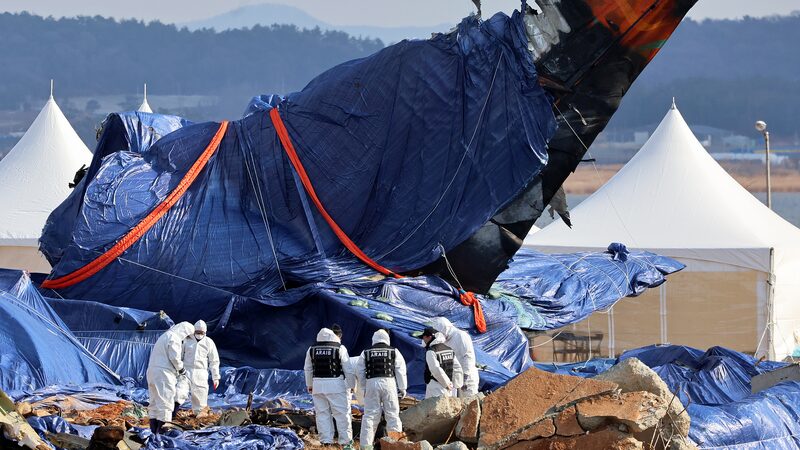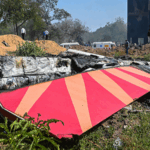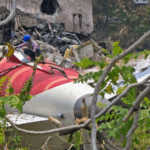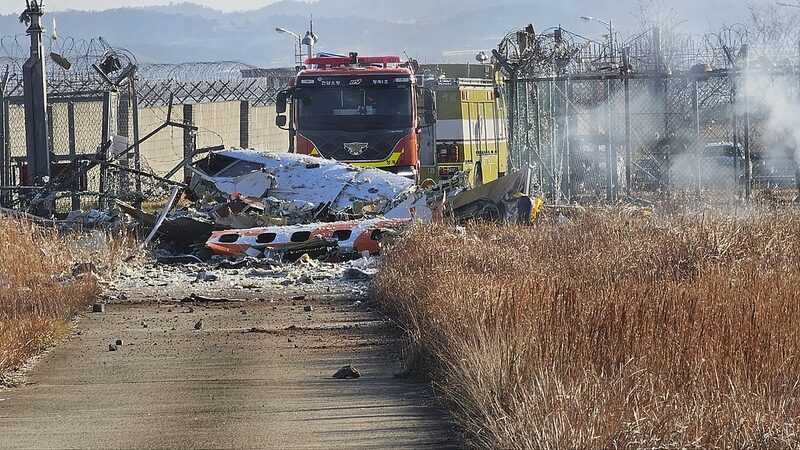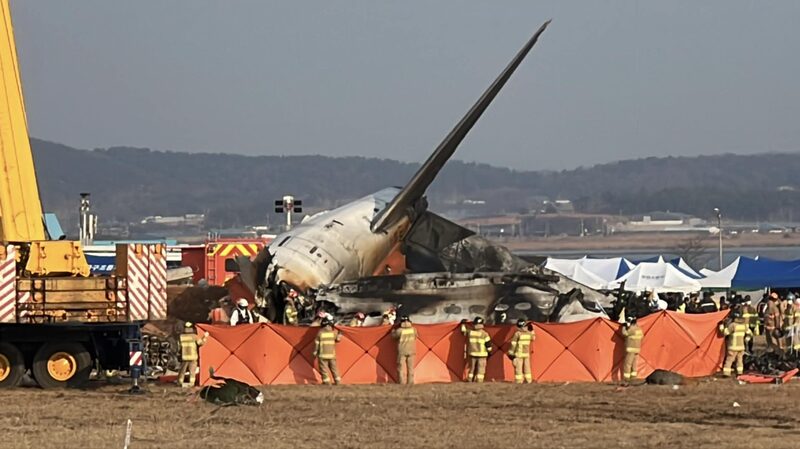The investigation into the Jeju Air crash at South Korea’s Muan airport has taken a perplexing turn as authorities revealed that the flight data and cockpit voice recorders stopped recording minutes before the disaster. The transport ministry announced on Saturday that both “black boxes” ceased functioning approximately four minutes before the Boeing 737-800 jet collided with a concrete structure, raising questions about the final moments leading up to the crash that claimed 179 lives.
The ill-fated flight 7C2216 had departed from Bangkok, Thailand, bound for Muan in southwestern South Korea on December 29. Shortly before the scheduled landing, the pilots reported a bird strike and declared an emergency. Air traffic control had issued a caution for “bird activity” just two minutes prior to the Mayday call. In response, the crew abandoned the landing attempt and initiated a go-around procedure.
However, instead of performing a standard go-around, the aircraft undertook a sharp turn and approached the runway from the opposite direction. The jet crash-landed without deploying its landing gear, overshot the runway, and erupted into flames after impacting an embankment. Two crew members seated in the tail section were rescued, but the tragedy marked the deadliest aviation accident on South Korean soil.
The missing data from the black boxes has added complexity to the investigation. The voice recorder was initially analyzed domestically, and upon discovering the absent information, it was sent to the U.S. National Transportation Safety Board for further examination. Similarly, the damaged flight data recorder was transported to the United States to collaborate with U.S. safety regulators.
Former transport ministry accident investigator Sim Jai-dong expressed surprise at the missing data, suggesting that a complete power loss—including backup systems—is an uncommon occurrence. “The absence of recordings from the critical final minutes is unusual and could indicate a total electrical failure,” he noted.
Families of the victims have called for greater transparency and the inclusion of independent experts in the investigative process. Some have questioned the transport ministry’s role in leading the probe, advocating for impartial specialists to uncover the truth behind the catastrophe.
Additionally, scrutiny has been directed toward the embankment that the aircraft struck. Designed to support the “localizer” system aiding in aircraft landings, questions have arisen regarding its rigid construction and proximity to the runway’s end. Investigators are examining whether these factors may have exacerbated the severity of the crash.
The transport ministry has assured that all available data will be utilized to determine the cause of the accident. “We are committed to conducting a thorough and transparent investigation,” the ministry stated, emphasizing that findings will be shared with the families affected by the tragedy.
Reference(s):
Ministry: Jeju Air 'black box' data missing from minutes before crash
cgtn.com
